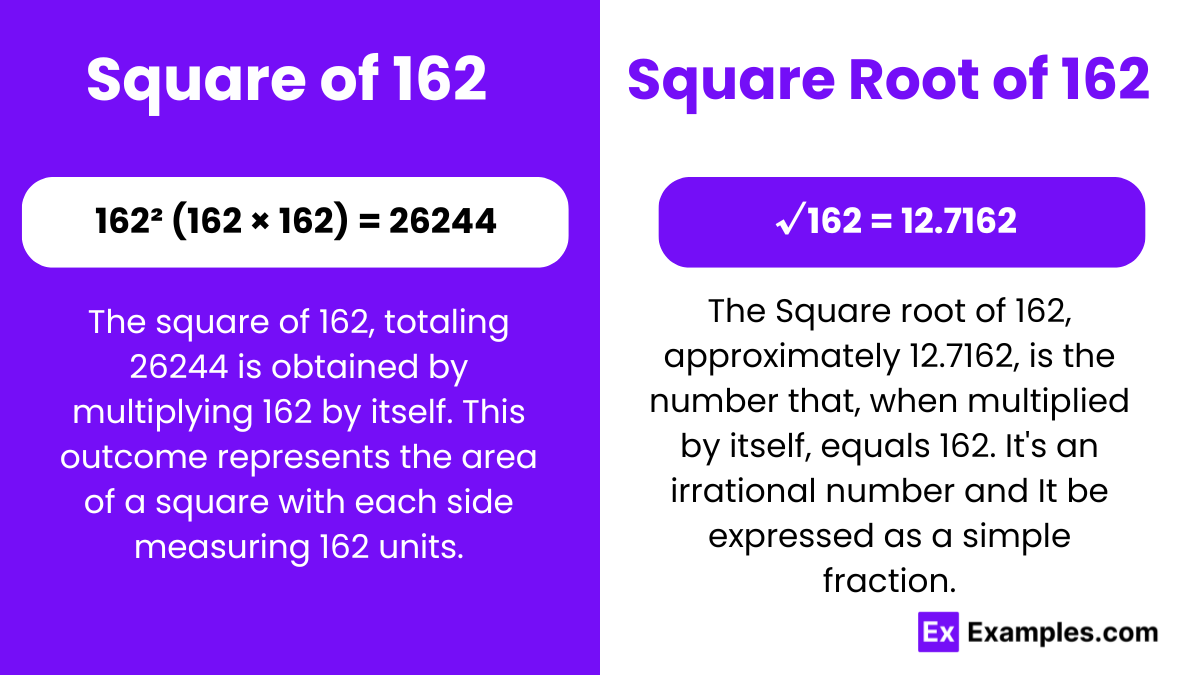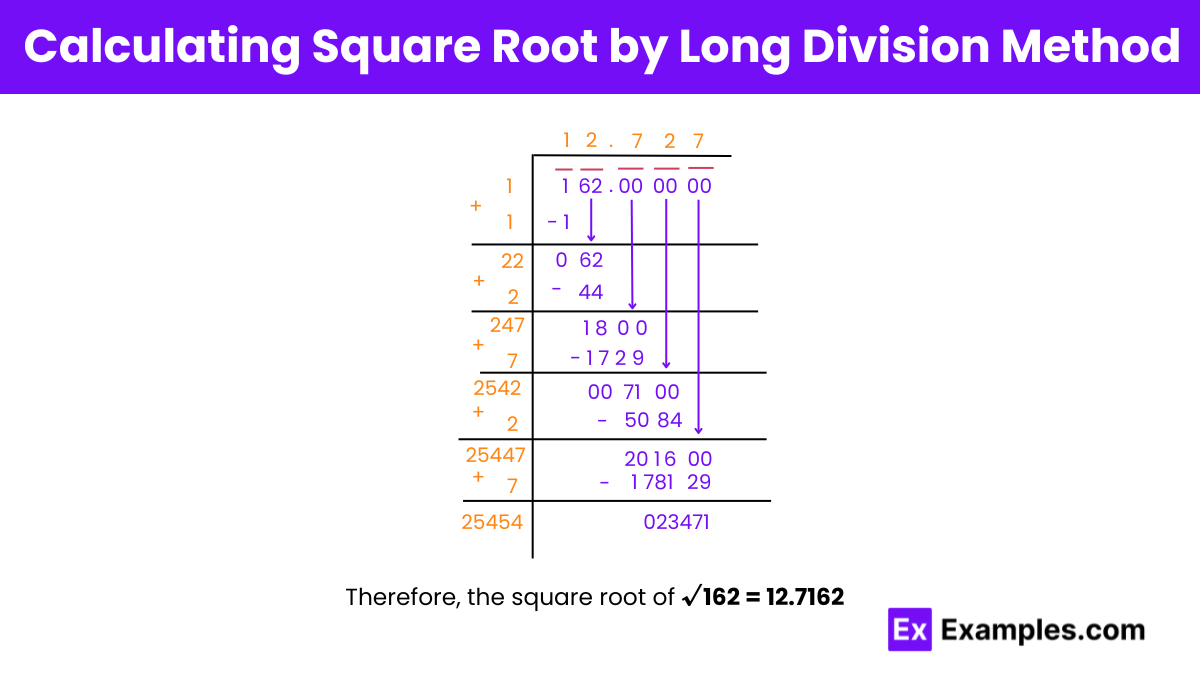What is the square of 162?
26244
32400
2916
28000


In mathematics, especially in algebra, squares and square roots are fundamental concepts. Squaring a number like 162 involves multiplying it by itself to get 26244. This operation is crucial for exploring properties of rational and irrational numbers, enhancing comprehension of mathematical relationships and patterns. Squares reveal numerical interactions, forming the basis of algebraic analysis, while square roots unveil the origins of numbers, highlighting their significance in mathematical frameworks. Mastering these concepts enhances mathematical prowess and analytical skills.
A square number, like 162, is obtained by multiplying a number by itself. The square of 162 equals 26244. Understanding square numbers elucidates their role in algebraic analysis, showcasing their significance in mathematical patterns and relationships, which is essential for comprehending fundamental mathematical concepts and their applications.
Or
√162 = 12.716 Upto 3 decimals
The square root of 162, when squared, equals 162. It’s the number that, when multiplied by itself, gives 162. The square root, approximately 12.727, unveils the origin of 162. Understanding square roots elucidates their role in algebraic analysis, showcasing their significance in mathematical patterns and relationships.
Exponential Form: 162^1/2 or 162^0.5
Radical Form: √162
A rational number is one that can be expressed as the ratio of two integers.
An irrational number cannot be expressed as such a ratio and has a non-repeating, non-terminating decimal expansion.
Method 1: Estimation and Trial-and-Error
Method 2: Long Division
Method 3: Newton’s Method (Iterative)

Step 1: Find a number (n) which when multiplied with itself (n × n ≤ 1). So, (n) will be (1) since (1 ×1 = 1).
Step 2: Now, we get the quotient as (1). Also, we have to add the divisor (n) with itself to get the new divisor. The new divisor here will be (2).
Step3: Bring down the pair (62). So, our new dividend is (62). Now find a number (m) such that (2m× m≤ 62). The number (m) will be (2) as (2²×2 = 4× 2 = 8 ≤ 62).
Step 4: Add a decimal in the dividend and quotient part simultaneously. Also, add 3 pairs of zero in the dividend part.
A perfect square is a number that can be expressed as the product of an integer multiplied by itself. In other words, perfect squares are the squares of integers. For example, ( 9 ) is a perfect square because ( 3 × 3 = 9 ).
The square factors of 162 are (1), (9), and (81), as (1² = 1), (3² = 9), and (9² = 81).
The cube root of 162 is approximately 5.4508
The fourth root of 162 is approximately 3.0723.
The rationalizing factor of √162 is ( 3√2} ), achieved by multiplying both the numerator and denominator by (√2).
Text prompt
Add Tone
10 Examples of Public speaking
20 Examples of Gas lighting
What is the square of 162?
26244
32400
2916
28000
What is the square root of 2916?
150
162
170
180
Which of the following numbers is closest to the square root of 162?
12.7
12.8
13
13.2
What is the approximate square root of 162 to the nearest whole number?
12
13
14
15
The square of which of the following is closest to 162?
12
13
14
15
What is the value of √162 in decimal form rounded to two decimal places?
12.72
12.82
12.90
12.75
If x² = 162, what is the value of x?
12.7
12.72
13
12.8
Which number squared is just above 162?
12
13
14
15
What is the square of 14?
196
182
210
202
The value of √162 falls between which two consecutive integers?
12 and 13
13 and 14
11 and 12
14 and 15
Before you leave, take our quick quiz to enhance your learning!

